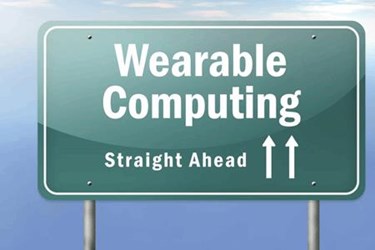How To Incorporate Digital Technologies In A Clinical Protocol

By Ed Miseta, Chief Editor, Clinical Leader

When he was asked to be a presenter at this year’s Mobile in Clinical Trials conference, Dmitri Talantov, M.D., R&D Operations Innovation Medical Leader, Janssen Research & Development, LLC, knew he would be tackling one of the hottest topics in the clinical space. The conference sponsor, The Conference Forum, had received many requests for the session via surveys, making it a critical issue to address. The session will be a panel presentation also featuring Craig Lipset, head of clinical innovation for Pfizer. I recently spoke with Dr. Talantov about the topic and what attendees can expect to learn.
Ed Miseta: What is the biggest trend you see occurring with incorporating digital technologies into trial protocols?
 Dmitri Talantov: Digital technologies in clinical development have matured a lot in recent years. Within sponsor companies, many firms, including Janssen, are now moving from pilot studies to more comprehensive implementations. The knowledge we gained from those pilot studies is now allowing us to locate more specific areas for implementation.
Dmitri Talantov: Digital technologies in clinical development have matured a lot in recent years. Within sponsor companies, many firms, including Janssen, are now moving from pilot studies to more comprehensive implementations. The knowledge we gained from those pilot studies is now allowing us to locate more specific areas for implementation.
Miseta: Is that also creating new problems for companies?
Talantov: I see two main problems that companies are facing. First, they are trying to understand the usefulness of devices. If I am a clinical scientist involved in a trial and I think a device might be useful to the study, I have to understand how to introduce it and make it happen. The internal resistance to it could be quite significant. The scientist must know how to articulate the advantages of having that digital technology in the trial. Second, they will also have to anticipate any potential barriers, and be able to explain to management how those barriers can be overcome.
Miseta: What are some of the barriers companies will need to overcome?
Talantov: A few years ago, when digital devices first started making their way into healthcare, there was a lot that we had to learn about how to use and incorporate these devices. Those were the barriers that companies had to overcome. But today we see vendor companies emerging with a much deeper understanding of what is clinical research, what outcomes are important, what level of evidence we need to present, and what regulatory requirements need to be met. All of this is important to demonstrate that the technology being deployed is relevant in a clinical research environment. These are important developments and the change is happening very quickly.
Regarding the regulators, guidance regarding digital technologies is clearly on their radar and something they are working on. The FDA recently issued another document clarifying their stance on mobile technologies. Yet many pharma companies are still trying to interpret the guidance and better understand how to incorporate digital technologies into clinical development programs going forward.
Miseta: Will it be difficult for companies having to choose between consumer-grade versus medical-grade devices?
Talantov: Digital technologies can be a vague term that encompasses many different solutions, from consumer grade devices to higher-end FDA-approved clinical technologies. One of the things we need to do is figure out how to make any of these technologies compatible with a clinical trial protocol without jeopardizing any regulatory stipulations or patient privacy concerns.
Pharmaceutical companies will need to understand how useful the various devices are and how we should best be using them. We are seeing many different areas where digital health implementation makes sense. In some areas, consumer-grade devices have a role to play. They help to engage patients, maintain their interest, and keep them enrolled in the study. That is a very important consideration when deciding whether or not to use them, even if the data collected is ultimately not used to support the desired endpoint.
At the same time, when using digital devices, more clinical researchers are interested in collecting longitudinal data rather than discrete pieces of data. They want to see patient data over time, not at one moment in time when they happen to be visiting the site. Researchers today want to be able to see what is happening with patients 24/7.
Another important development is this discourse around healthcare transformations and the rise of value-based medicine. This has more of a focus on the patient’s quality of life and wellbeing, and how they view the value of their treatments. In that area, digital technologies are not just helpful, they are increasingly becoming instrumental in collecting that type of data.
Miseta: Recently several individuals have told me we can continue to make excuses for not incorporating digital devices, or we can put aside the excuses and instead make progress. Do you agree?
Talantov: Absolutely. It is always easier to say no than to try something new, especially in a highly regulated environment like the pharmaceutical industry. When it comes to performing clinical trials, we know that we need new technologies to achieve our goals and to change medical development. There is only one way to make the change happen and that is to start doing it and learn from the results. We are still just getting our feet wet, but companies will not learn anything from making excuses for not moving forward.
Miseta: There is a lot of talk today about patient centricity. In addition to everything else you mentioned, digital technologies seem like a great tool companies can use to make trials easier on patients.
Talantov: I agree with that as well. From our perspective, patient centricity is one of the pillars upon which we will transform clinical trials. If we are not successful at incorporating the patient voice, we cannot move forward and change the course of drug development. In just the last 10 years, the role of cell phones and other smart devices have dramatically changed. The technology has changed and the devices have changed. Today, if you want to be patient centric and build a study around the patient, we have to reflect those changes in our trial protocols. These devices will play a multi-faceted role in trials, including data source, connectivity between physicians and patients, and a source of intervention. They are part of a patient’s everyday life and we would be remiss to not respect that and make it a part of their trial experience as well.
Miseta: Do you have an example of this patient centric aspect you can share?
Talantov: We are currently involved in a study partnership with Scripps Health (led by Eric Topol, professor of genomics at The Scripps Research Institute) and Aetna called the mHealth Screening To Prevent Strokes, or mSToPS. We are hoping to understand the prevalence of arterial fibrillation(AF), a condition involving a disturbed electrical connectivity of the heart which is associated with a high risk of stroke, it can occur without any symptoms, making it a very dangerous condition.
The study will help to understand AF better and to learn about prevalence of asymptomatic AF. These patients are healthy and are generally not seeing a doctor. Therefore we wanted to find a way to integrate the study into their lives, as opposed to forcing them to spend time having to visit a site. The approach we took creates a virtual study where all data collection is done remotely using digital devices. A patch is used to record EKG signals for two weeks, with all of the recordings analyzed remotely. The study is still underway, and we look forward to its successful completion in the near term. Part of that success is due to the fact that we were able to quickly recruit a large number of patients due to the minimal amount of disturbance the study would have upon their lives.
To hear more about digital technologies and the impact they will have on clinical trials, join in the discussion with Dmitri Talantov and Craig Lipset at Mobile in Clinical Trials, September 19, 2016 in Boston.
